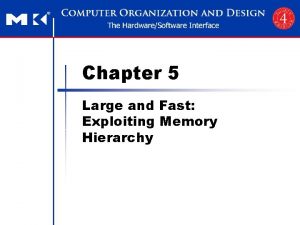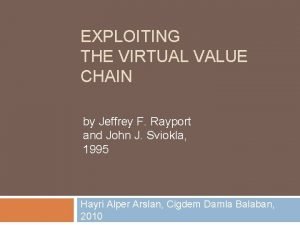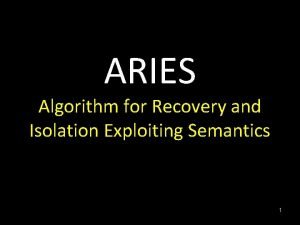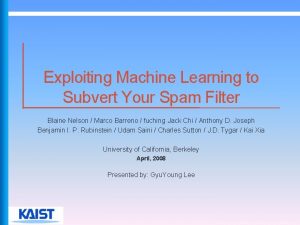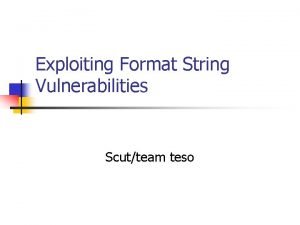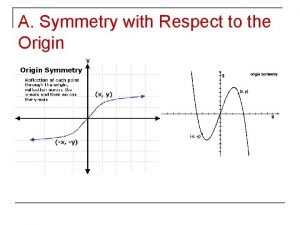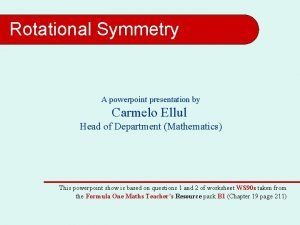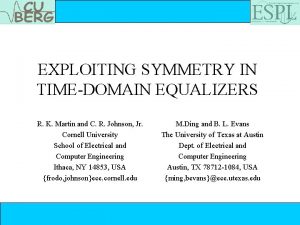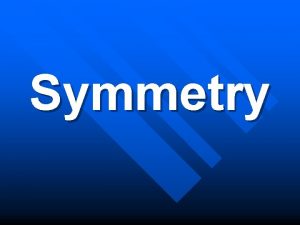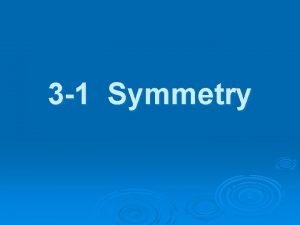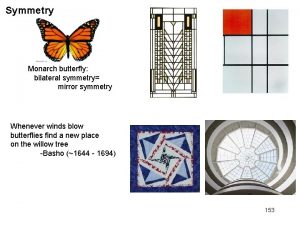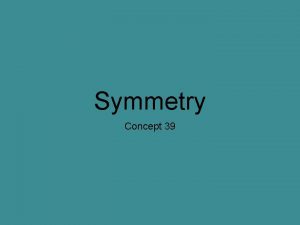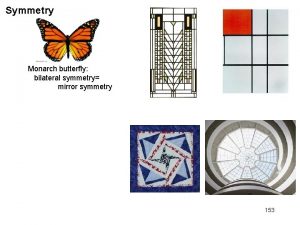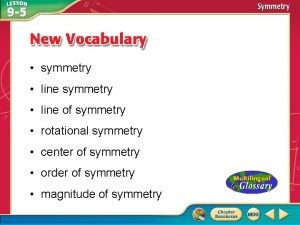EXPLOITING SYMMETRY IN TIMEDOMAIN EQUALIZERS R K Martin









- Slides: 9

EXPLOITING SYMMETRY IN TIME-DOMAIN EQUALIZERS R. K. Martin and C. R. Johnson, Jr. Cornell University School of Electrical and Computer Engineering Ithaca, NY 14853 USA {frodo, johnson}ece. cornell. edu M. Ding and B. L. Evans The University of Texas at Austin Dept. of Electrical and Computer Engineering Austin, TX 78712 -1084 USA {ming, bevans}@ece. utexas. edu

Introduction • Discrete Multitone (DMT) Modulation magnitude – Multicarrier: Divide Channel into Narrow band subchannels – Band partition is based on fast Fourier transform (FFT) – Standardized for Asymmetric Digital Subscriber Lines (ADSL) channel carrier subchannel Subchannels are 4. 3 k. Hz wide in ADSL frequency

ADSL Transceiver (ITU Structure) N/2 subchannels Bits quadrature amplitude modulation (QAM) encoder S/P N real samples mirror data and N-IFFT add cyclic prefix P/S D/A + transmit filter TRANSMITTER channel RECEIVER N/2 subchannels P/S QAM demod decoder Up to N/2 1 - tap FEQs N real samples N-FFT and remove mirrored data remove S/P cyclic prefix time domain equalizer (TEQ) receive filter + A/D

Cyclic Prefix Combats ISI with TEQ copy CP v samples s y m b o l i N samples CP CP: Cyclic Prefix • CP provides guard time between successive symbols • We use finite impulse response (FIR) filter called a time domain equalizer to shorten the channel impulse response to be no longer than cyclic prefix length s y m b o l ( i+1) channel Shortened channel

MSSNR TEQ Design • Maximum Shortening SNR (MSSNR) TEQ: Choose w to minimize energy outside window of desired length nk xk yk h + rk w hwin, hwall : equalized channel within and outside the window • The design problem is stated as • The solution will be the generalized eigenvector corresponding to the largest eigenvalue of matrix pencil (B, A)

Symmetry in MSSNR designs • Fact: eigenvectors of a doubly-symmetric matrix are symmetric or skew-symmetric. • MSSNR solution: – A and B are almost doubly symmetric – For long TEQ lengths, w becomes almost perfectly symmetric • MSSNR for Unit Norm TEQ (MSSNR-UNT) solution: – A is almost doubly symmetric – In the limit, the eigenvector of A converge to the eigenvector of HTH, which has symmetric or skew-symmetric eigenvectors.

Symmetric MSSNR TEQ design • Idea: force the TEQ to be symmetric, and only compute half of the coefficients. • Implementation: instead of finding an eigenvector of an Lteq matrix, we only need to find an eigenvector of an matrix. • The phase of a perfectly symmetric TEQ is linear, • Achievable bit rates: Loop # MSSNR SYMMSSNR Loss CSA 1 12. 187 Mbps 10. 921 Mbps 10. 39% CSA 5 12. 120 Mbps 11. 800 Mbps 2. 64% CSA 2 13. 016 Mbps 12. 493 Mbps 4. 02% CSA 6 10. 995 Mbps 10. 798 Mbps 1. 79% CSA 3 11. 543 Mbps 11. 529 Mbps 0. 12% CSA 7 10. 978 Mbps 10. 880 Mbps 0. 89% CSA 4 11. 696 Mbps 11. 431 Mbps 2. 27% CSA 8 10. 294 Mbps 9. 956 Mbps 3. 28%

Matlab DMTTEQ Toolbox 3. 1 • The symmetric design has been implemented in DMTTEQ toolbox. • Toolbox is a test platform for TEQ design and performance evaluation. • Most popular algorithms are included in the toolbox • Graphical User Interface: easy to customize your own design. Available at http: //www. ece. utexas. edu/~bevans/projects/adsl/dmtteq/

Conclusions • Infinite length MMSNR TEQs with a unit norm constraint are exactly symmetric, while finite length MSSNR TEQs are approximately symmetric. • A symmetric MSSNR TEQ only has one fourth of FIR implementation complexity. • Symmetric design enables frequency domain equalizer and TEQ to be trained in parallel. • Symmetric design exhibits only a small loss in the bit rate over non-symmetric MSSNR TEQs. • Symmetric design doubles the length of the TEQ that can be designed in fixed point arithmetic.

